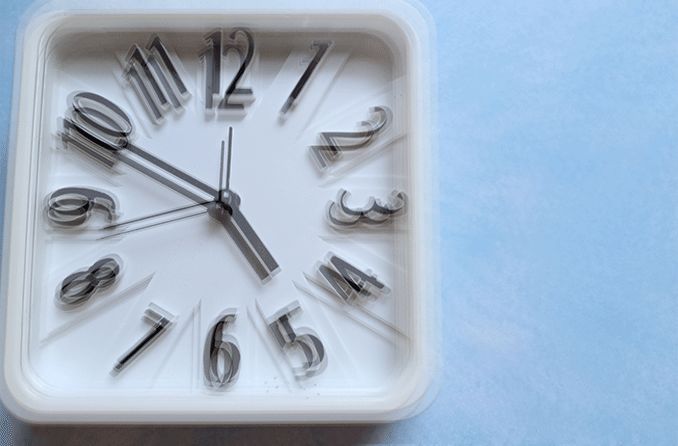What is tunnel vision?
Tunnel vision is a lack or loss of peripheral vision that only allows you to see objects directly in front of you. You can simulate severe tunnel vision by covering one eye and using the other to look through the cardboard tube of a roll of paper towels.
Often, peripheral vision loss that leads to tunnel vision occurs gradually. By the time you realize you no longer have a normal field of view, your tunnel vision may already be permanent and irreversible.
What is peripheral vision?
Your field of view (or visual field) is the extent of the observable world that your eyes can see at any given moment.
When a normal eye is focused on an object straight ahead, the human visual field extends:
100 degrees outward (toward ear)
60 degrees inward (toward nose)
60 degrees upward
75 degrees downward
Essentially, the objects you focus your eyes on (like the letters on an eye chart) comprise your central vision. Nearly all the rest of your visual field is considered peripheral vision.
Visual field defects and tunnel vision
The extent and sensitivity of your field of view is evaluated by an eye doctor using a number of visual field tests. Loss of vision in any quadrant (out, in, up or down) of your field of view is called a visual field defect.
Tunnel vision is a particular type of visual field defect where all quadrants of the visual field are constricted (reduced in size). In other words, your peripheral vision in all directions (out, in, up and down) shrinks. The 360-degree loss of peripheral vision becomes the dark “tunnel” of your tunnel vision.
Complete tunnel vision mostly develops in a gradual process; however, depending on the cause of the reduced visual field, tunnel vision can also occur in a sudden onset.
READ MORE: Idiopathic Intracranial Hypertension (IIH)
What causes tunnel vision?
The most common cause of tunnel vision and peripheral vision loss is damage to the optic nerve caused by glaucoma.
Other potential causes include:
Brain damage from stroke or disease
Migraines can cause temporary tunnel vision. If present, migraine-related vision disturbances (including peripheral vision loss) typically last only 20 to 30 minutes.
Sudden onset of peripheral vision loss or tunnel vision that lasts more than 30 to 60 minutes should be considered a medical emergency. See an eye doctor immediately for a comprehensive eye exam and visual field testing if you suspect or notice any persistent loss of peripheral vision.
SEE RELATED: Usher Syndrome
Treatment of peripheral vision loss
Unfortunately, most cases of non-migraine tunnel vision and peripheral vision loss are permanent and irreversible.
One possible exception may be early vision loss from certain types of stroke in the brain. For example, a stroke affecting the visual cortex causes peripheral vision loss called hemianopia or cortically induced blindness. In some cases, peripheral vision may improve spontaneously within the first few months after a stroke of this kind.
Also, in a recent study published in the scientific journal Brain, researchers found that certain types of vision training can increase the speed and extent of vision recovery after these strokes. This training should begin within six months of the stroke for best effects.
Based on these findings, if you or a loved one has suffered vision loss from a recent stroke, consider consulting a neuro-ophthalmologist to see if vision training might be helpful.
Coping with vision loss
Any permanent loss of sight can significantly affect your quality of life and mental health. If you have tunnel vision, consider consulting a mental health professional for advice on how to cope with this major life change.
Be aware that peripheral vision loss will also affect your ability to drive safely. This may prevent you from being able to keep, renew or obtain a driver’s license — even if you can still see 20/20 on an eye chart.
Though regular eyeglasses and contact lenses will not correct peripheral vision loss, certain low vision devices, such as magnifiers and telescopic glasses, can be helpful.
For example, special prism glasses can help expand your side vision if you have certain types of peripheral vision loss.
To learn more about specialized eyewear to cope with the loss of peripheral vision, consult an eye doctor who is a low vision specialist.
Preventing tunnel vision
Some types of tunnel vision and peripheral vision loss are preventable.
For example, if you’ve been diagnosed with glaucoma, you can prevent, delay or limit vision loss by making sure you:
Take the daily glaucoma medication prescribed by your eye doctor
Have routine follow-up exams to monitor your eye pressure and visual field
Also, take these steps to reduce your risk of a vision-threatening stroke, especially if you have risk factors for cardiovascular disease:
Exercise regularly
Watch your weight
Eat a healthy diet
Have annual physical and eye exams
The only real “cure” for tunnel vision and peripheral vision loss is prevention and early detection. Get a yearly physical, an annual eye exam, and follow the advice of your physician and eye doctor.
SEE ALSO: Blurry peripheral vision










